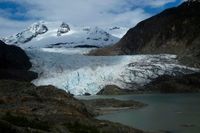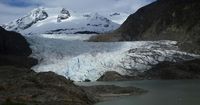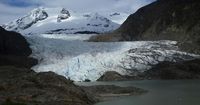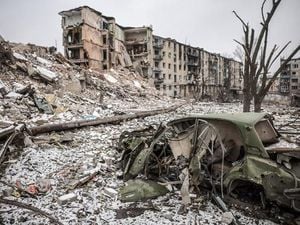On August 12, 2025, the city of Juneau, Alaska, found itself bracing for what officials warned could be the most significant flood event in its recent history. For years, residents living near the Mendenhall Glacier have nervously watched the annual cycle of water building up behind the ice dam at Suicide Basin—a phenomenon that has become an unwelcome tradition since 2011. But this year, the stakes are higher than ever, with meteorologists and emergency officials urging swift evacuations and preparing for a record-setting surge of floodwater.
According to the National Weather Service (NWS), the trouble began when a vast upstream basin of rainwater and snowmelt, trapped by the thinning and retreating Mendenhall Glacier, began to release its contents. As water started escaping the ice dam on the morning of August 12, the NWS issued a flood warning for the Mendenhall River area near Auke Bay, a region dotted with homes that sit within miles of the glacier and directly along the river’s banks. By Tuesday afternoon, the water level had already climbed to 9.85 feet—well on its way to the major flooding threshold of 14 feet.
"This will be a new record, based on all of the information that we have," Nicole Ferrin, a meteorologist with the National Weather Service, told a news conference on Tuesday, as reported by the Associated Press. The expected crest was predicted between 16.3 and 16.8 feet, surpassing the previous records set in both 2023 and 2024. Last August, the river had reached 15.99 feet, which was already about a foot higher than the prior year’s peak. The numbers this time were sobering, and officials wasted little time in recommending that residents in the most vulnerable neighborhoods prepare to evacuate.
The science behind these so-called glacier outburst floods—or GLOFs, as they’re known among researchers—reads like something out of a disaster movie. Each spring and summer, Suicide Basin fills with rainwater and snowmelt, the legacy of a smaller glacier that once occupied the space but has since retreated. The Mendenhall Glacier, now acting as an icy barricade, holds back this growing reservoir. Eventually, the mounting pressure forces water to tunnel under or around the glacier, surging into Mendenhall Lake and, ultimately, down the Mendenhall River. Before overtopping the basin over the weekend, water levels were rising as much as four feet per day during especially sunny or rainy spells, the NWS noted.
For many in Juneau, the annual threat has become a source of anxiety and frustration. In some years, flooding has been limited to streets and properties near the lake or river. But recent years have seen houses swept away, hundreds of homes swamped, and neighborhoods transformed by the volatile power of water. In 2024 alone, nearly 300 residences were damaged when the river, fueled by a massive outburst, carved new channels and ate away at the riverbank. “Two years ago, towering trees behind a home fell into the rushing Mendenhall River as the water ate away at the bank. Eventually, the home, teetering at the edge, also collapsed into the river,” as reported by the Associated Press.
The numbers behind these floods are staggering. According to researchers at the University of Alaska Southeast and the Alaska Climate Adaptation Science Center, a large outburst event can release around 15 billion gallons of water—enough to fill nearly 23,000 Olympic-size swimming pools. During the 2024 flood, the flow rate in the Mendenhall River was estimated to be about half that of Niagara Falls, underscoring the sheer force at play.
This year, the city of Juneau, working with state, federal, and tribal agencies, took proactive steps to limit the damage. A temporary levee was installed along roughly 2.5 miles of riverbank, consisting of about 10,000 four-foot-tall barriers. The goal: to protect more than 460 properties from flood levels similar to those seen last year. Nate Rumsey, deputy director with the city’s engineering and public works department, explained that these measures were intended as a stopgap while longer-term solutions are explored.
But for many residents, the pace of permanent change feels glacial—no pun intended. The U.S. Army Corps of Engineers has just begun what’s expected to be a multi-year study of the region, aiming to develop a lasting fix for the recurring floods. The timeline, however, has left some in the community feeling angry and helpless. Outburst floods are projected to continue as long as the Mendenhall Glacier remains in its current position, acting as an ice dam—a situation that could persist for another 25 to 60 years, according to university and science center researchers.
The political response to the crisis has been swift but, in the eyes of many, still insufficient. On August 10, Alaska Governor Mike Dunleavy issued a state disaster declaration in response to what he described as the “imminent threat of catastrophic flooding from a glacier lake outburst flood” in the Juneau area. The declaration followed joint local disaster declarations and requests for assistance from the city and borough of Juneau, as well as the Tlingit and Haida Indian Tribes of Alaska. These moves have unlocked additional resources and support, but the underlying threat remains unchanged for now.
Meanwhile, the Mendenhall Glacier itself continues to draw tourists from around the world, its blue ice and dramatic setting a stark contrast to the anxiety simmering just downstream. It’s a popular destination thanks to its proximity—just 12 miles from downtown Juneau—and the easy access provided by walking trails. Yet, for those living in the shadow of the glacier, the beauty is tinged with apprehension. Each summer brings the same question: will this be the year the water wins?
For now, Juneau’s residents are left to watch the river’s rise, sandbags stacked and evacuation plans at the ready. The city’s temporary levee stands as both a symbol of resilience and a reminder of the work yet to be done. As the floodwaters crest and recede, the community will once again take stock, rebuild, and brace for what the next year may bring. The glacier, after all, isn’t going anywhere soon.






